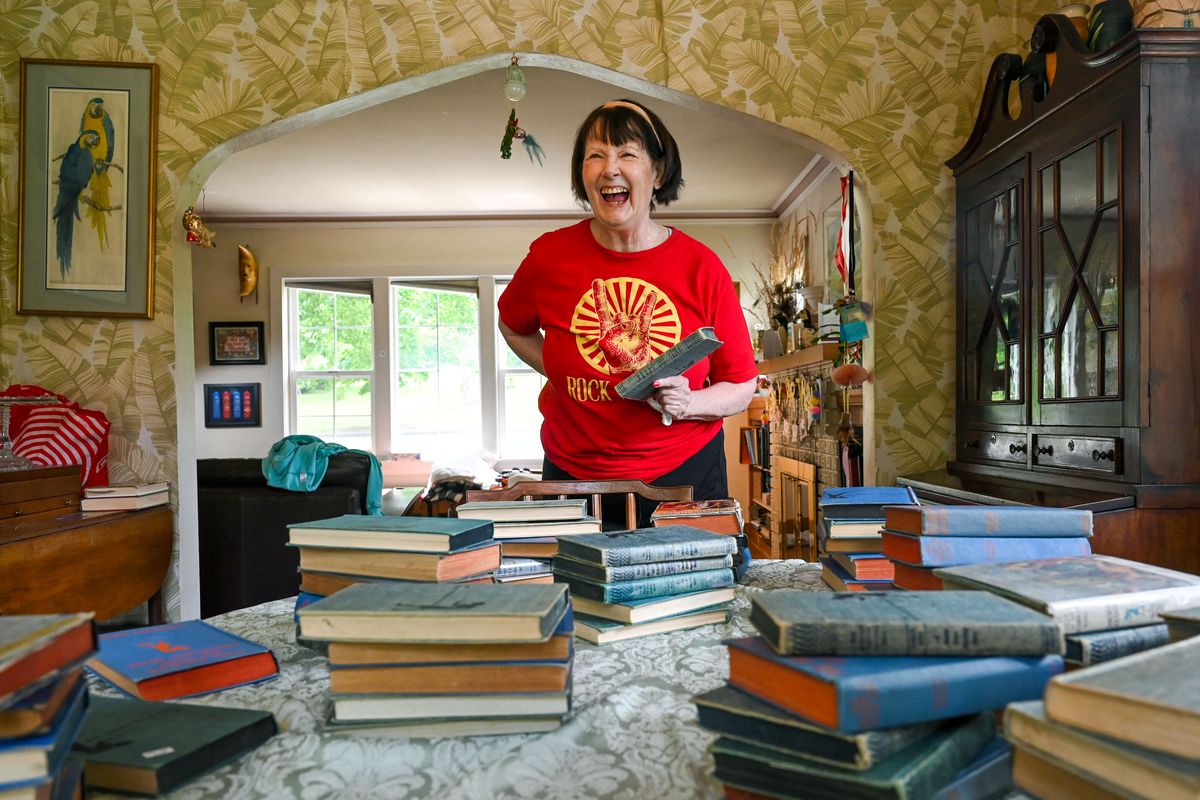This column reflects the opinion of the writer. Learn about the differences between a news story and an opinion column.
The Collector: Susan Bunting has all the Nancy Drew a true investigator could want

When Susan Bunting was a child in Longview, Washington, her mother read aloud to her every evening.
That’s when she was introduced to teenage amateur sleuth Nancy Drew.
Ghostwritten by many authors under the pen name Carolyn Keene, the original series debuted in 1930 and chronicled the adventures of Nancy, who lived in the fictional town of River Heights with her father, attorney Carson Drew, and their housekeeper, Hannah Gruen. The teen solves mysteries at home and abroad – some she stumbles upon and some begin as cases of her father’s. She’s often assisted by her two closest friends, cousins Bess and George.
The mysteries and the character enthralled Bunting.
“Nancy was clever, resourceful, kind,” she said. “Everything I wanted to be.”
From “The Secret of the Old Clock,” to “The Haunted Showboat,” each story captivated her.
“When I got older, I’d walk to the library and check them out myself,” Bunting said. “At the height of my reading glory, I could read one every couple of days. I hated to finish one.”
She read each volume multiple times.
“I admired Nancy – she was so independent and brave,” Bunting said. “She had all the adventures and I didn’t have any.”
She didn’t aspire to be Nancy but said she would have loved to be Nancy’s sister if she’d had one.
“Or maybe Bess. She was always eating pies and cakes,” she said.
When Bunting left home at 18, she took a handful of Nancy Drew mysteries with her. Many years later she saw a first-edition volume at Powell’s Books in Portland. She picked it up for $1, and a collection was born.
“After a few years, I realized they were becoming rare, so I started buying every one they had when we went to Powell’s,” she said.
Her collection now numbers 66 first editions (with several duplicates) and is focused exclusively on the books published by Grosset & Dunlap in the 1930s-1950s.
The earliest volumes have a thick blue cloth cover with orange printing – a silhouette of Nancy with a magnifying glass was added later. By the 1940s, covers were medium blue with a dark blue silhouette, and in the 1950s, covers were blue tweed with Nancy embossed in dark blue.
They feature a glossy illustration on the front leaf and pen and ink drawings on the inside cover.
Bunting pointed to the art inside “The Secret in the Old Attic.”
“It looks like an etching,” she said.
Some of her first editions like “The Clue in the Jewel Box,” and “The Secret of the Wooden Lady” have their original dust jackets.
She picked up “The Secret of the Wooden Lady.”
“This one intrigued me because of the wooden ladies (figureheads) carved on the prow of the ships.”
It’s hard for her to choose a favorite. As she sorted through the stacks, she recalled the fun of unwrapping the mysteries in “The Quest of the Missing Map” and “The Secret at Shadow Ranch.”
“I liked them all,” she said.
Bunting hasn’t added to her collection in years and is thinking of selling it.
“I have two sons and no grandchildren,” she said. “There’s no one to leave it to.”
But her affection for the books makes them hard to part with. They played a big part in her childhood.
“Those were hard years for me,” Bunting said. “When I read them, they gave me an escape and a sense of hope.”
She looked at the volumes spread across her dining room table.
“I think I’d like to read them all again in order,” she said.